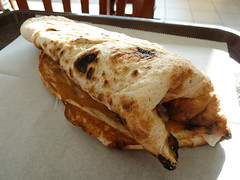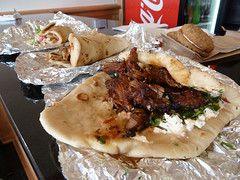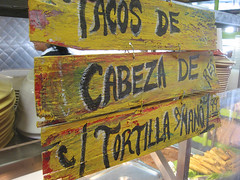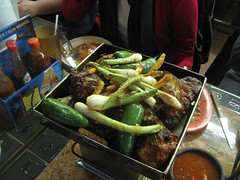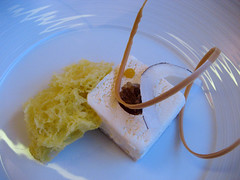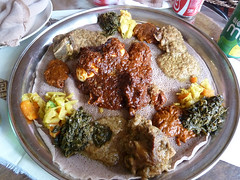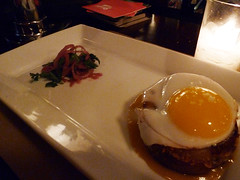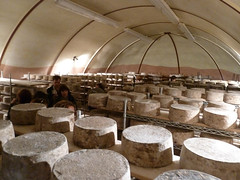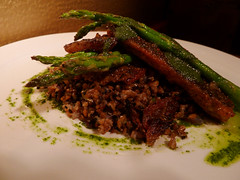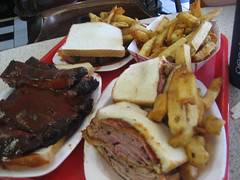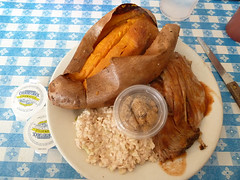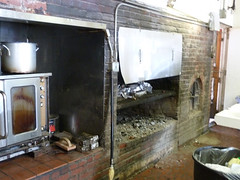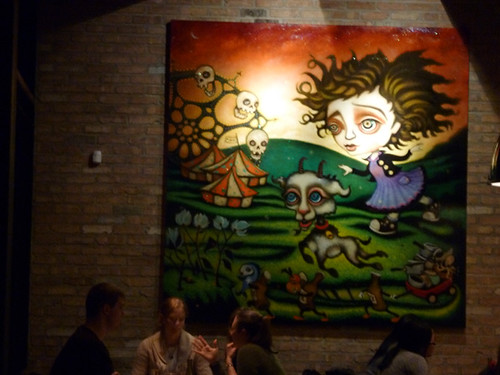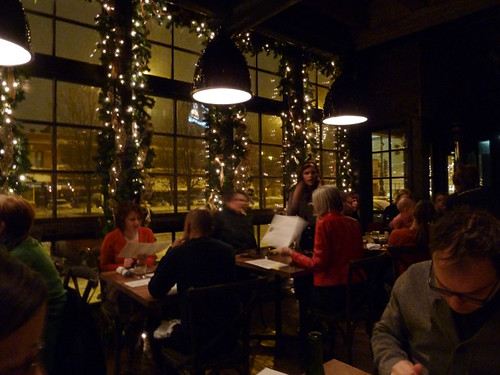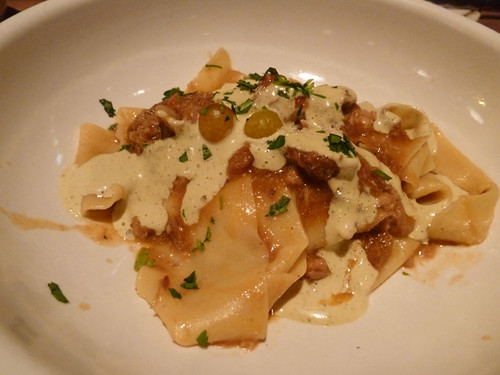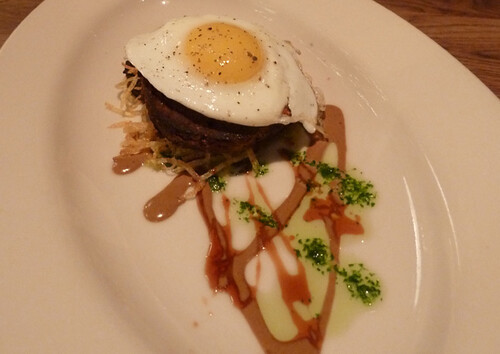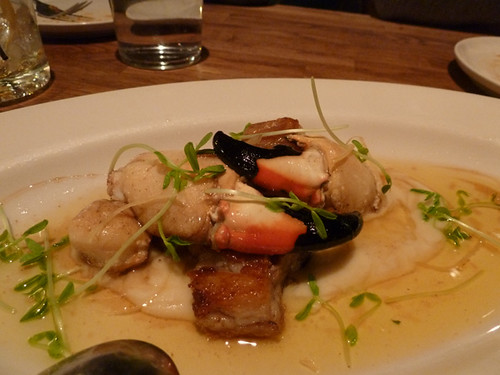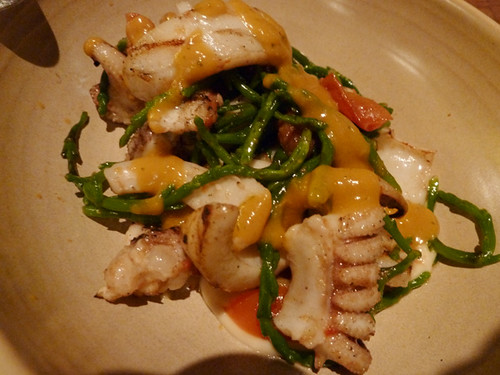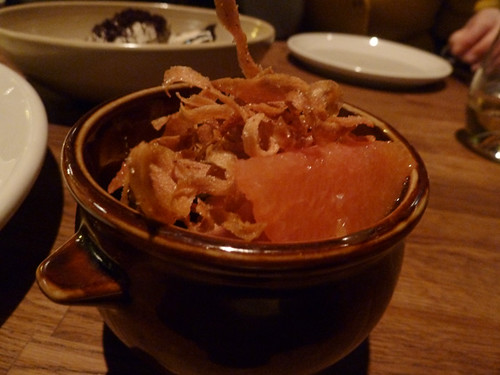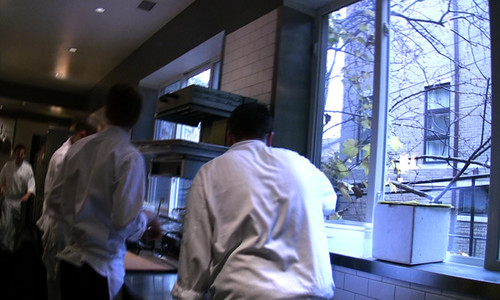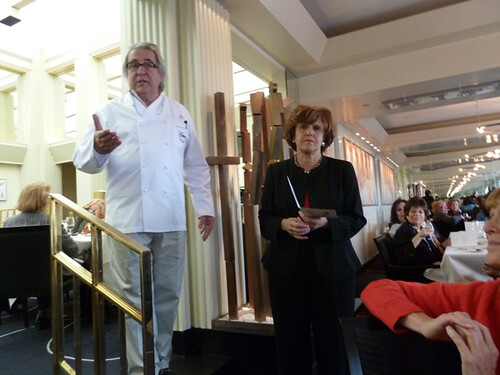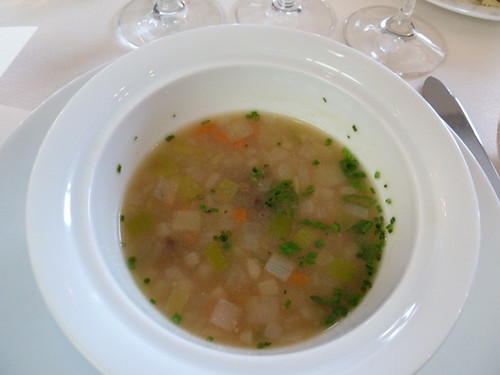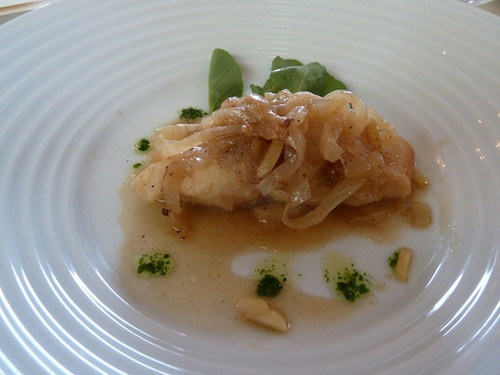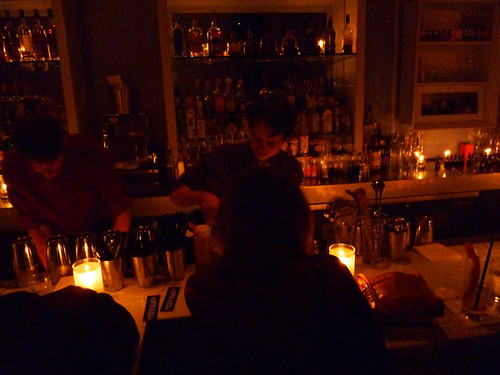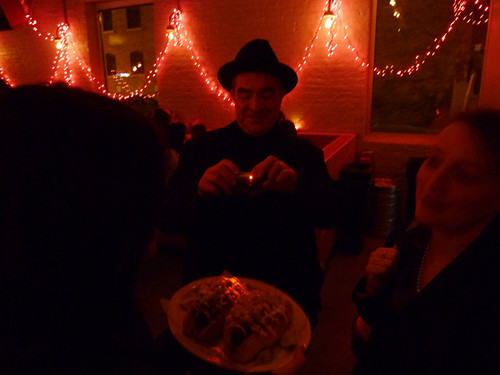A suburb on Lake Michigan up where you can tell the north shore was basically rural small towns until five minutes ago, Lake Bluff has a cute little downtown plaza, much less busy than Highland Park’s, say, where they put up Christmas banners saying “It’s a Wonderful Life in Lake Bluff” without irony. (It’s plainly Bedford Falls, not Pottersville.) And right on the corner of one of those cute buildings is the rare suburban restaurant that could actually lure me out for dinner an hour away, Inovasi.
I’m not being snobbish about the suburbs, I’m sure there are many fine dining places that are quite good, scattered throughout them. But I have a certain feeling that fine dining places everywhere don’t so much belong to any place as to their own country, Culinerica. So until I run out of fine dining places to try in Chicago, I just don’t feel a need to go try ones an hour or more away and have their take on food influenced by the same chefs of the moment and same dining trends as are influencing chefs closer to me. I’d rather try the Coney Dog place that’s been around since the 1910s, or the old pizza place, or whatever than the “best” restaurant in Cincinatti or Orlando… or Lake County.
Paul Virant and Vie overcame that, and now I’m an evangelist for taking the train or I-55 to Western Springs. But he’s been pretty much the only one. I got more interested in John Des Rosiers when his outspoken views about molecular gastronomy being a crock got him into trouble about a year ago, and then when I got to try a dab of his food at Green City Market. When not-a-publicist-anymore Ellen Malloy mentioned that he’d been trying to get her to come up there (but she doesn’t have a car), I offered to go with her and check it out. And then six months passed, but after shooting him for Key Ingredient, we finally made plans and went. (You will have noticed that that was my disclosure, that this was about as far from an anonymous meal as one could get, not least in that we were his guests.)
I thought it was weird at the time that Des Rosiers was so philosophically opposed to the molecular gastronomy thing because his outlook and menu— even the name of his restaurant— didn’t seem conservative or classical. At the same time, though he uses lots of the same kind of sustainable/artisanal stuff as the nose-to-tail chefs like Virant and will rattle off suppliers like any of them, his food isn’t like all those trendy porky places in the city. As he says in the video I shot, his cooking is very improvisational— and maybe that’s where he runs into trouble with chefs who devise elaborate conceptual formulas for dining experiences. So far as I can boil it down into a single thought, I think his feeling is you can’t improvise with great ingredients if you’re altering them so much that they’re not themselves any more. He needs the solidity of things being themselves in order to riff on them:
if you take a perfect piece of buffalo mozzarella from Italy and drop it into liquid nitrogen, you ruin the intrinsic value of each ounce of effort and passion that went into producing it. You in fact lose the very value it held.
Though he did some time at Charlie Trotter’s, overwhelmingly he’s worked on the north shore— for Gabriel Viti of Gabriel’s, and at Bank Lane Bistro in Lake Forest. And I think that that has made him kind of an evolutionary island of his own, a bit cut off from the omnipresent Blackbirdization of dining in the city— it’s almost surprising at this point to eat fine food that doesn’t ramp up the acidity, say. Maybe some would find that a flaw— at times it maybe made the food seem a little behind the times, or at least the trends— but it also meant it didn’t taste just like the last 10 upscale meals I’ve eaten out, and that was a good thing. There was more novelty and more genuine surprise at this meal than I can remember having since, I don’t know, maybe the first time I ate vegetables at Mado or something.
Our table was slightly dim, pleasant for dining, not as good for picture taking, so my photos are not going to be the best. But here’s what we had:
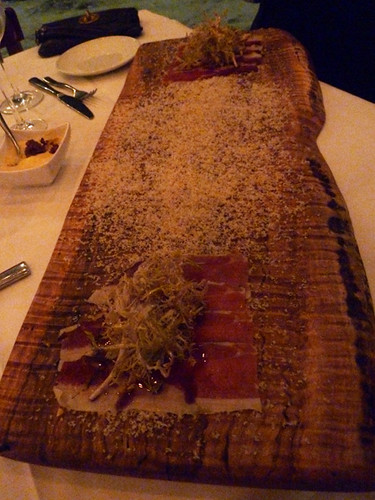
• Speck (made from Becker Lane pork from some producer I hadn’t heard of, not La Quercia) with a tossed salad and walnut “sawdust,” served on the board that starred in the Key Ingredient video. Obviously more about the quality of the speck (which is terrific) than anything else, but I thought the slightly tart salad was pretty much perfectly calibrated to the pork.
• Tempura cheese curds. We told him later he needed to serve big bowls of these at the bar during football games. I liked these better in their cheesy-junk foody way than the chickpea/feta fritters at Girl & The Goat a couple of weeks back.
• A Mexican (Tarascan) soup traditionally made with beans, but here with kabocha squash. Nice enough but definitely Anglo Mexican, not a lot of heat or funk.
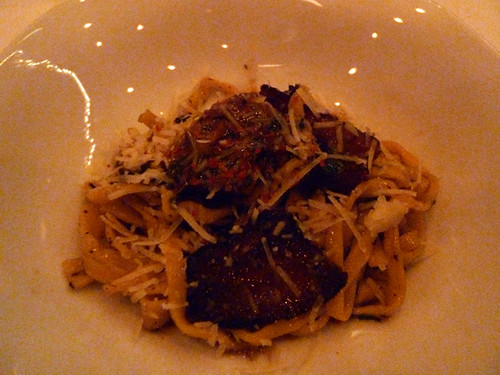
• Housemade pasta with chunks of guanciale braised in sake to the point that they tasted like pastrami or something. Do other people braise guanciale? I don’t know, but they should, this was a great dish, everything in it perfectly made and full of big flavor.
• Snails in a bourbon-mascarpone cream with toasted ciabatta croutons and black garlic. The black garlic was maybe extraneous, but the sauce was terrific and to me, a good sign of how adept Des Rosiers is flying by his technique; the same sauce made with butter would have been too rich and heavy, but mascarpone was just light enough in flavor for it, and it was paired beautifully with an acidic red wine which cut the richness.
• Lobster and wild mushrooms in a red wine sauce. After those two hits, this was a miss; lobster and red wine could go together, I guess, but they didn’t, it needed more of the silkiness of the traditional cream sauce, or something, and the mushrooms were diced to a size that seemed like scraps, while raw brussels sprout on top was too coarse for the dish.
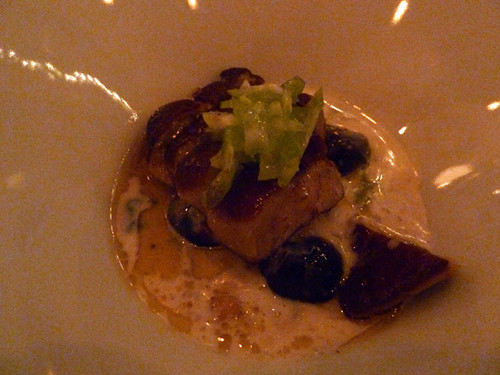
• Seared foie with cherries, raw celery and a cream sauce. A nice take on the sweetness-with-foie thing that was big in the 90s, though a whole cherry with a slice of foie was too much; I cut mine in half.
• A little bit of a grilled cheese sandwich with chorizo. Just what it says.
• Bison with a creamy polenta and pickled artichokes (seen in the Key Ingredient video). I avoided eating the goo with the bison, as it overwhelmed its mild flavor; the tartness of the artichoke, on the other hand, brought it out. Des Rosiers said up front that his intention is for everything to be eaten together, but in this case, I have to disagree.
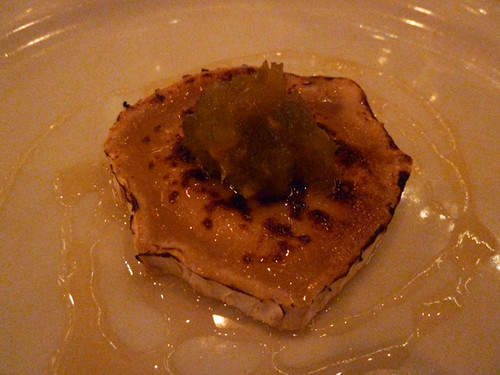
• A sheep’s cheese (I think) drizzled with honey and tomato relish.
• Desserts: a very good espresso chocolate cake (with our friends the cherries again), an even better pannetone bread pudding, and some take on PB&J which I don’t even remember trying.
Nothing wildly bizarre or trendy, but even if we hadn’t been talking to Des Rosiers throughout, I think we would have picked up on the care with which he selects ingredients and the pretty high batting average at combining them in novel, but not in your face strange, ways.
Saying that Inovasi must be the most interesting restaurant for many miles in these suburbs wouldn’t be all that much in terms of praise; as with Vie, he’s bringing city-level cooking to a land of stuffy steakhouses and the like. But the most interesting thing about Des Rosiers is that he’s not only making it happen in fine dining— where there’s room for one of anything, really, wherever there’s money— but across the street he’s opened Wisma, the first of a chain of little shops offering prepared foods and high quality ingredients, trying to make sustainable/artisanal food available to his people. It doesn’t take long to pick up on the fact that Des Rosiers sometimes resents the city for not noticing what he’s doing up there— and I’d say his complaint is justified, on the quality of this meal— but however well that serves as a personal spur to ambition, it shouldn’t get in the way of the fact that he’s leading his own community to better ways of eating, better ingredients and better practices, more or less singlehandedly. And that’s a pretty admirable and interesting thing regardless of whether the trendy hordes, or even the city’s food media, notice him or not.


 Posted in
Posted in 
